| In the pastoral setting of Matakohe, where rolling hills are home
to few people but millions of sheep, we found one of the top NZ museum. The Kauri Museum
of Matakohe features the history of kauri tree, timber and gum in the context of
pioneering in New Zealand. This is undoubtedly one of the best museums we have seen
anywhere on our travels. |
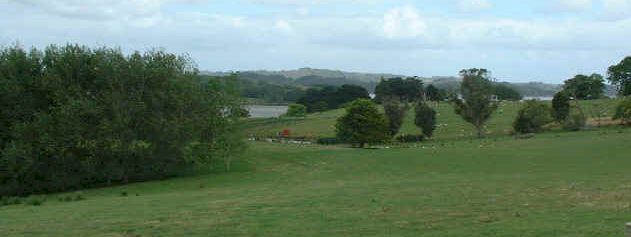
|
|
|
 |
A small white church, schoolhouse, and village post office are
typical of the buildings we could see as we drove through this countryside. |
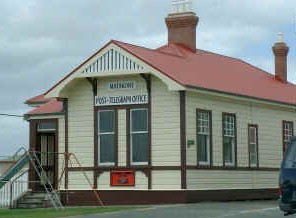 |
|
|
Kauri lumber plays an important part in the early history of NZ.
The Maori used the wood to build dugout canoes and the gum as chewing gum and tattooing.
European settlers used kauri for building and exported logs all over the world for ship
building. 75% of the kauri forests were cut down in about 150 years of harvesting. These
ancient trees are now protected in forest reserves.
Paula is standing next to a kauri log display to show it's relative size. This
particular log is about 800 years old. |
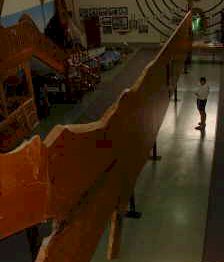
|
|
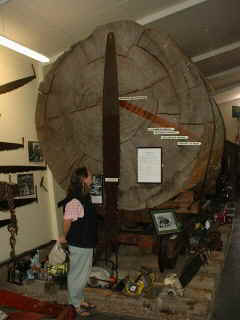
|
One exhibit showed examples of kauri gum embedded in coal and
carbon dated 43,000,000 years. One highly polished piece of marsh preserved kauri was
carbon dated 3,000,000 years. Bowls and other wood items are for sale in the gift store
that are made of marsh preserved kauri carbon dated between 40,000 and 50,000 years
The photo on the left shows a center board of a kauri tree that stood 23 meters
tall and was almost 2 metres in diameter. The largest kauri seen by Europeans was about 28
feet in diameter! |
|
|
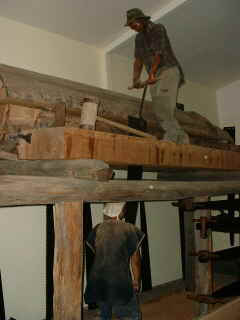
|
| The saw pit was the way logs were sawn into boards
before the invention of steam powered sawmills. This was hard sweaty work. Hard for the
top sawyer who had to lift the heavy saw, and equally hard for the bottom sawyer who had
to endure the sawdust blizzard. |
|
| Exhibits, with very lifelike mannequins, show how kauri was worked, by sawyers
in saw pits and later in steam powered sawmills. An entire reconstructed steam powered
sawmill takes up 1/4 of the museum floor space. The drive belts roll over the large
wheels, the circular saw blades turn, and the vertical ones move up and down as the great
kauri logs appear to move through the mill. |

|
|
|
|
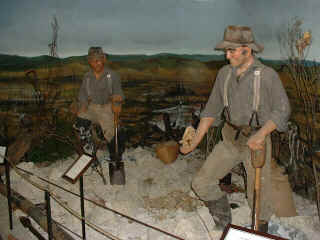
|
| Gum diggers searched for gum deposits in swamps and old forest
locations. Using gum rods up to 20 feet long, the diggers would probe the swamp and then
either dig or use gum hooks to bring the gum deposits bag to the surface. Kauri gum was
used in making varnishes and paints, linoleum, and perfumes, among other things. The
fellow on the right is scraping a piece of gum before polishing and buffing. The museum
has a very large collection of polished kauri gum as well as some pieces for sale in the
gift shop.
|
|
| Large kauri forests covered NZ for many millions of years. Natural disasters
destroyed forests several times leaving wood and gum hidden under new growth. Swamp kauri
has been found up to 3 layers deep within 30 meters of earth indicating that forests have
been destroyed several times, only to grow back. Kauri gum and preserved wood is still
being found in some of these area. |
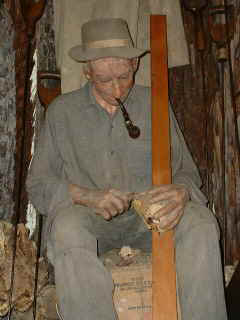
|
|
|
|
|
 S/V
TETHYS
S/V
TETHYS S/V
TETHYS
S/V
TETHYS